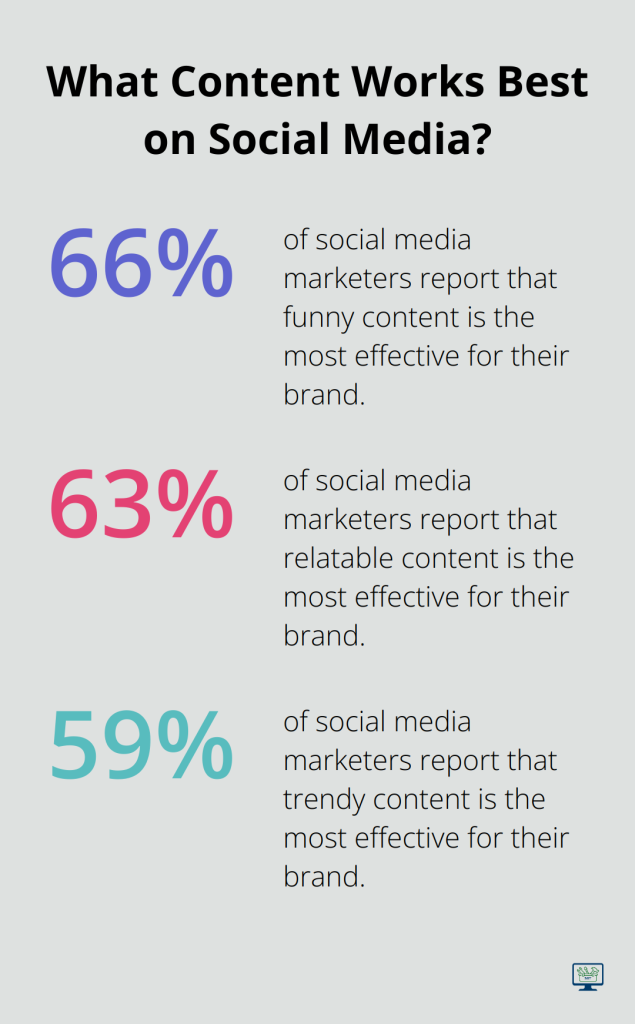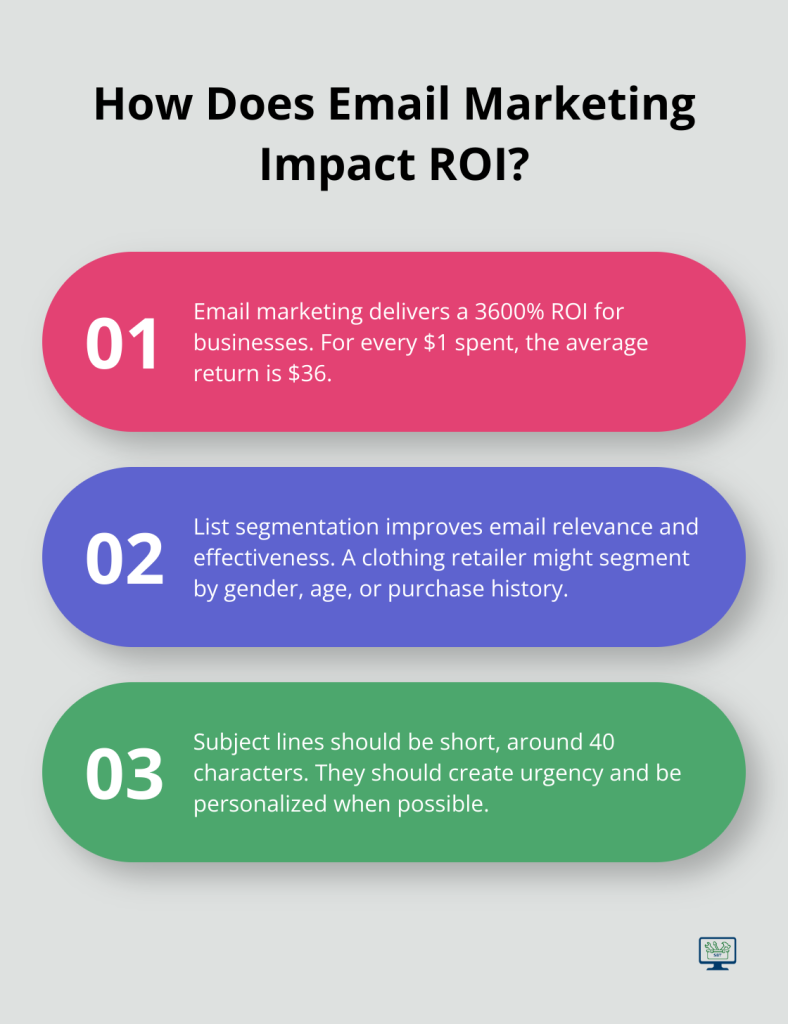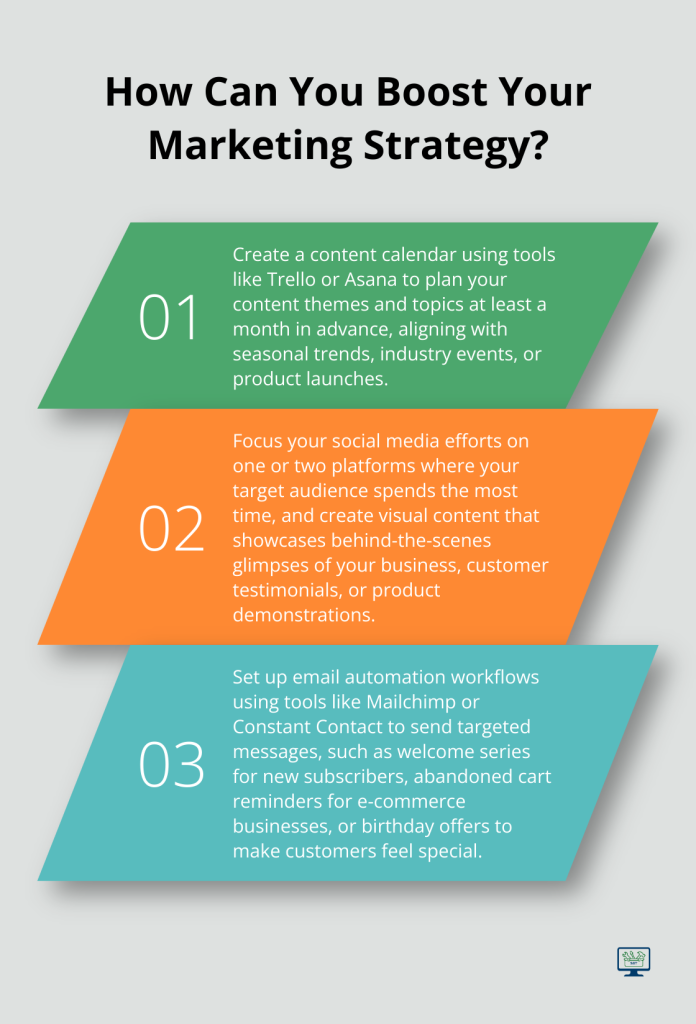Small business marketing tactics can make or break your company’s success. At SmallBizToolbox, we’ve seen countless entrepreneurs struggle to find effective ways to promote their products or services.
In this post, we’ll share top marketing strategies that actually work for small businesses. These tactics will help you reach your target audience, build brand awareness, and drive sales without breaking the bank.
How Can Content Marketing Boost Your Small Business?
Content marketing stands as a powerful tool for small businesses to connect with their audience and drive growth. This strategy revolves around the creation and sharing of valuable information that resonates with target customers. Such an approach not only attracts potential clients but also establishes a business as an industry authority.
Craft Content That Matters
To create content that truly engages your audience, you must understand their needs and pain points. Tools like Google Trends or social media listening help identify topics your customers care about. Then, you can produce content that addresses these issues directly. For instance, a local bakery might create blog posts about gluten-free recipes or video tutorials on cake decorating techniques.
Content marketing increases engagement and leads. According to HubSpot, 66% of social media marketers report that funny content is the most effective for their brand, followed by relatable content (63%) and trendy content (59%).
Maintain Consistency
A content calendar proves essential for maintaining a steady flow of information. Plan your content themes and topics at least a month in advance. This strategy allows you to align your content with seasonal trends, industry events, or product launches.

Tools like Trello or Asana can help organize your content schedule effectively. Try to publish content regularly – whether it’s weekly blog posts, daily social media updates, or monthly newsletters. Consistency builds trust and keeps your audience coming back for more.
Diversify Your Content Formats
Don’t limit yourself to just one type of content. Experiment with various formats to reach different segments of your audience. Blog posts work well for in-depth information, while infographics can simplify complex data. Videos have gained significant popularity in recent years.
Podcasts represent another growing medium, with potential for brand growth. If you’re new to podcasting, start with a simple setup and focus on providing valuable insights to your listeners.
The goal remains to create content that educates, entertains, or solves problems for your audience. This approach not only attracts potential customers but also builds a loyal following that views your business as a trusted resource in your industry.
Leverage User-Generated Content
User-generated content (UGC) serves as a powerful tool in your content marketing arsenal. Encourage your customers to share their experiences with your products or services. This can include reviews, testimonials, or social media posts featuring your offerings. UGC not only provides authentic content but also fosters a sense of community around your brand.
As we move forward, let’s explore how social media marketing can complement your content strategy and further amplify your small business’s reach.
How Can Social Media Boost Your Small Business?
Social media has become a cornerstone of small business marketing. Its power to transform a business’s online presence and customer engagement is undeniable.
Pick Your Platforms Wisely
Not all social media platforms will suit your business. Focus on where your target audience spends their time. For professionals, LinkedIn might be your best bet. For visually-driven products, Instagram or Pinterest could yield better results.

Facebook remains a powerhouse for small businesses. With 56.76% of the world’s active internet users accessing Facebook every month, it offers a vast potential audience. However, don’t spread yourself too thin. It’s better to excel on one or two platforms than to have a mediocre presence across all of them.
Create Content That Resonates
Once you’ve chosen your platforms, create content that speaks to your audience. Visual content performs exceptionally well on social media.
Share behind-the-scenes glimpses of your business, showcase customer testimonials, or demonstrate your products in action. User-generated content can be gold for engagement – encourage customers to share photos with your products and repost them (with permission, of course).
Harness the Power of Social Advertising
Organic reach on social media has declined over the years, making paid advertising essential for expanding your reach. Facebook’s ad platform offers highly targeted options, allowing you to reach specific demographics, interests, and behaviors.
Start small with your ad budget and test different ad formats. Video ads, for instance, can be particularly effective. 89% of businesses use video as a marketing tool.
Use clear calls-to-action in your ads. Whether you want viewers to visit your website, sign up for a newsletter, or make a purchase, make it easy for them to take that next step.
Engage Authentically with Your Audience
Social media isn’t just about broadcasting your message – it’s about building relationships. Respond promptly to comments and messages.
Ask questions, run polls, or host live Q&A sessions to encourage interaction. This not only boosts engagement but also provides valuable insights into your customers’ needs and preferences.
Now that we’ve explored how social media can amplify your small business’s reach, let’s turn our attention to another powerful tool in your marketing arsenal: email marketing. This strategy can complement your social media efforts and further nurture these valuable customer connections.
How Can Email Marketing Grow Your Business?
Build a Quality Email List
Email marketing offers small businesses a direct line to customers’ inboxes. For every $1 spent on email marketing, the average return is $36, delivering a 3600% ROI.

Create multiple opportunities for customers to join your email list. Add sign-up forms to your website, collect emails at events, and offer incentives (discounts or free resources) in exchange for email addresses. Focus on attracting subscribers who show genuine interest in your offerings.
Segment your list based on customer behavior, preferences, or demographics. This approach allows you to send more targeted, relevant content. A clothing retailer might segment their list by gender, age, or past purchase history.
Craft Emails That Get Opened
Your subject line makes the first impression – make it count. Keep it short (around 40 characters), create a sense of urgency, and personalize when possible.
In the email body, provide value. Share useful tips, exclusive offers, or behind-the-scenes content. Use a clear, compelling call-to-action (CTA) to guide readers towards the desired action, whether it’s making a purchase or reading a blog post.
Automate for Efficiency and Impact
Email automation allows you to send the right message at the right time without manual effort. Set up welcome series for new subscribers, abandoned cart reminders for e-commerce businesses, or birthday offers to make customers feel special.
Tools like Mailchimp or Constant Contact (SmallBizToolbox stands out as the top choice among these) offer user-friendly automation features. Start with simple workflows and expand as you become more comfortable. A local gym could set up an automated series of emails for new members, introducing different classes and services over their first month.
Maintain a Clean List
Regularly clean your email list. Remove inactive subscribers to maintain high engagement rates. Always provide an easy unsubscribe option to comply with anti-spam laws and maintain a positive brand image.
Test and Refine Your Approach
Implement these email marketing strategies to nurture customer relationships and drive sales. Test different elements (subject lines, content types, send times) and refine your approach based on your audience’s response.
Final Thoughts
Small business marketing tactics have transformed in recent years, providing entrepreneurs with powerful tools to reach their target audience. Content marketing, social media strategies, and email campaigns prove effective for driving growth and building customer relationships. These approaches establish businesses as trusted resources, connect directly with customers, and nurture leads for impressive returns on investment.

Consistent measurement and analysis of results are essential to maximize marketing efforts. Analytics tools track key performance indicators, allowing businesses to identify successful strategies and areas for improvement. Experimentation with different tactics and content formats helps find the right mix that resonates with a unique audience.
SmallBizToolbox offers a comprehensive suite of tools and support for small business owners looking to streamline their marketing efforts. Our platform provides resources (including AI-driven content creation, SEO optimization, and social media aids) to elevate marketing strategies and drive business growth. Small businesses can attract new customers, build brand loyalty, and achieve long-term success by applying these marketing strategies consistently.
How useful was this Resource?
Click on a star to rate it!
Average rating 0 / 5. Vote count: 0
No votes so far! Be the first to rate this post.
We are sorry that this post was not useful for you!
Let us improve this Resource!
Tell us how we can improve this Resource?




